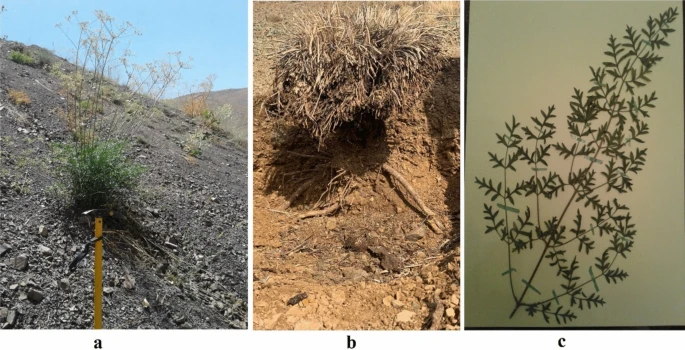
Considering the toxicological effects of some heavy metals (HMs) in which directly related to mortality and carcinogenicity in the population by their entrance from plants through livestock grazing, and medical skin cream, the rehabilitation of contaminated sites through phytoremediation by native plants might be quite challenging. Diplotaenia damavandica Mozaff. ex-Hedge & Lamond, is used as medical skin creams due to the existence of specific ingredients, which can be effective in treating skin disease. In the present study, the plant and associated soil sampling were performed around the boundary of D. damavandica. The concentration was measured using the Inductively coupled plasma mass spectrometry (ICP-MS). The results revealed the effect of existing endemic plants on reducing the average concentration of lead and zinc in soil by 40 and 60%, respectively, due to phytoremediation. EDX confirmed the presence of Pb and Zn in root and shoot tissues. Based on the results of this study, D. damavandica is an endemic perennial herbaceous plant with 60% biomass and prosperous root systems, which can grow in low contaminated areas of Pb in the southeast of Damavand Mt. Hence, the HMs pattern indicated less often in the aerial parts except for lead, which should be examined more carefully for skin cream uses.